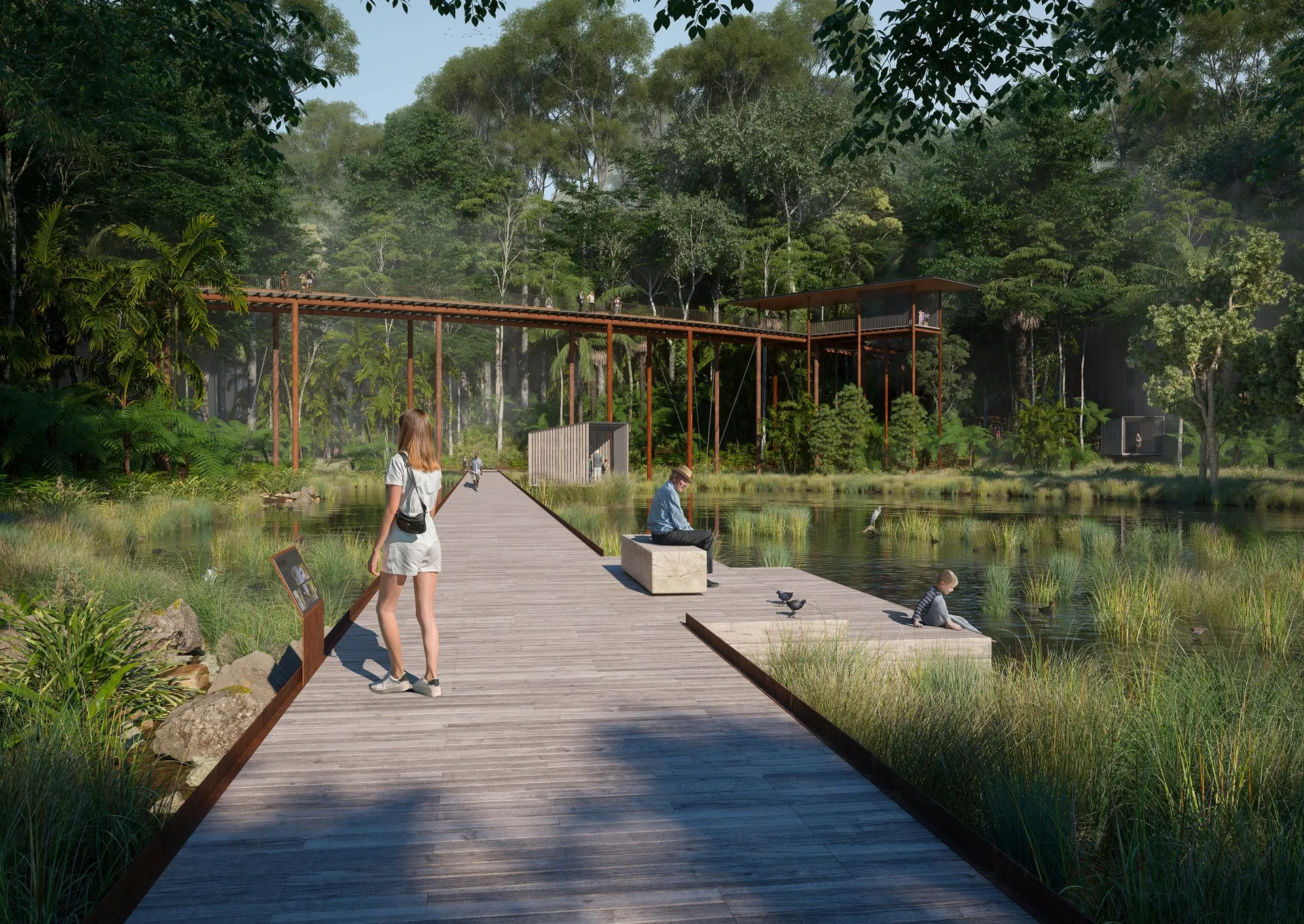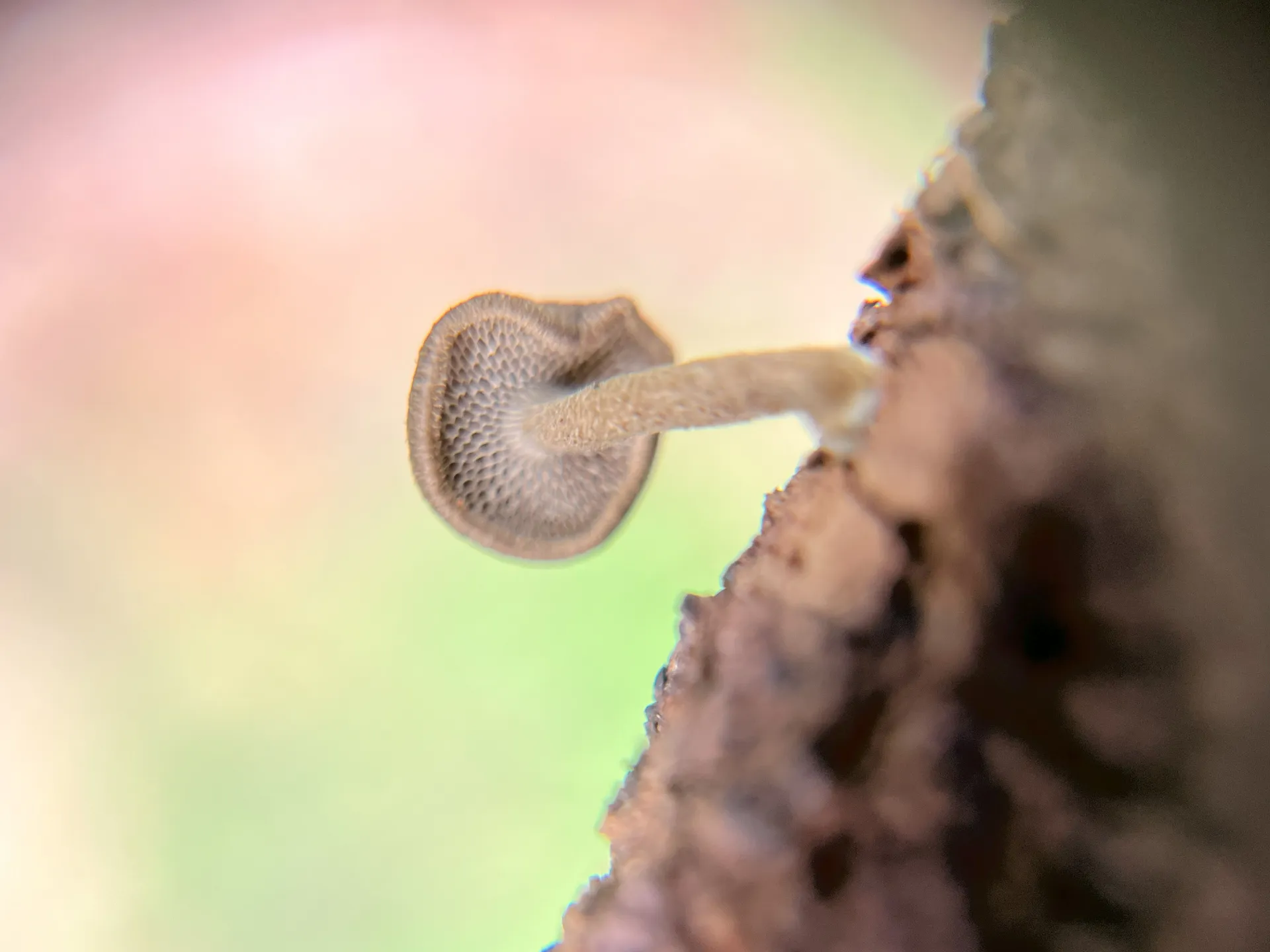Turtles to fungi: latest from ecological wonderland project
Check out some of the species spotted as this hinterland project evolves!

From turtles and frogs to planting events and research, the Sunshine Coast Ecological Park has been a hive of activity.
As early phases continue on the ecological park project, the team has shared the latest news from the project site in Maleny.
Remember to subscribe for future updates and stay up-to-date as the project progresses.
About the ecological park
The Sunshine Coast Ecological Park is being established on 65 hectares of land adjoining Mary Cairncross Scenic Reserve on Jinibara Country, Maleny.
The project aims to balance ecological restoration of the cleared pasture site with community recreation, creating a place of connection, culture, education and environmental stewardship.
Delivered in phases over several decades, the park will grow with the support and involvement of the community.
There will be many opportunities for people to get involved and help shape a vibrant, sustainable legacy.

Highlights proposed include walking trails, a forest lookout tower, treetop boardwalks, spaces for events, a community hub, facilities for research, and revegetation of more than 70 per cent of the site.
Project update: what’s been happening?
The project is currently in the early site investigation and design planning phase (2024-2029).
Since the project’s previous update in September 2024, previously agisted land is now under Council management, further allowing for site investigations and revegetation activities.
Understanding the site
Site studies will provide critical baseline data to better understand the site’s ecological values, inform design planning, guide restoration and support long term management.
A range of site and environmental assessments are underway.
Land and feature survey

A comprehensive site survey has been completed using a blend of techniques to map topography, waterways, vegetation, infrastructure and other site features.
Did you know? Survey methods can include drones and vehicle-mounted sensors that collect data while driving across the landscape.
Water monitoring and research
A 12-month water monitoring program is about to start, helping to build a baseline understanding of the site’s surface and groundwater.
This data will help to manage the groundwater dependent ecosystems like the surrounding rainforests and guide future water and land management decisions across the park.
In parallel, Griffith University is undertaking a research project to compare and better understand the composition and characteristics of water at the ecological park and Mary Cairncross Scenic Reserve.
Did you know? Surface water and groundwater are closely connected. Changes in one can affect the other.
Fungi research
Fungi surveys were carried out at the Ecological Park and Mary Cairncross Scenic Reserve as part of a broader research initiative.
Activities included soil sampling, DNA collection, fungi walks and a scientific fungi illustration workshop.

This research is helping build knowledge of local forest ecology to guide future restoration activities.
Did you know? Some fungi form underground networks that help trees share water and nutrients, often called the “wood wide web”!
Flora survey
Over 230 native plant species were recorded across the site, including seven listed as threatened.
The survey confirmed remnant notophyll vine forest and host plants for the Richmond birdwing butterfly and pink underwing moth.
Did you know? On the Sunshine Coast, the survival of the Richmond birdwing butterfly depends on a single native vine, Richmond birdwing vine (Pararistolochia praevenosa).
Frog survey
A recent survey confirmed the presence of several native frog species including the great barred frog, eastern sedge frog, tusked frog, striped marsh frog and graceful tree frog.

These findings will help shape habitat restoration efforts to ensure the park continues to support healthy amphibian populations as the site evolves.
Did you know? Larger frogs, like the green tree frog, can eat small mammals like mice and bats!
Fish survey
Surveys across five locations recorded a diverse range of aquatic life using nets, traps and non-lethal electrofishing techniques.
Five native fish species were found, including long finned eels, freshwater catfish, crimson-spotted rainbowfish, purple spotted gudgeons and carp gudgeons.
Cherax crayfish, saw-shelled turtles and pest species such as gambusia and swordtails were also recorded.
Did you know? Saw-shelled turtles can stay underwater for hours by absorbing oxygen through their skin and throat lining.
Terrestrial mammal, bat and reptile survey
Seasonal surveys are being carried out in autumn and spring to monitor mammals, bats and reptiles across the site.
A range of techniques are being used including camera traps, acoustic monitors, spotlighting and live trapping methods.
Did you know? Thermal cameras help detect heat signatures at night, making them a useful tool for spotting cryptic animals like gliders.
Bird (avifauna) survey
Bird surveys will take place across cool and warm seasons to record species diversity and bird populations across the site.
Methods will include call playback and active searches.
Did you know? ‘Avifauna’ is the term for birds found in a particular region or habitat.
Remember to subscribe to ecological park news for more survey results in future updates!
Restoring the landscape
Maleny C&K Kindergarten tree planting
More than 60 students, staff and parents helped plant 265 native rainforest seedlings representing 38 different species.
The event offered a way for young children to contribute to the park’s long-term legacy.
Community working bees
Monthly revegetation and weed management efforts continue at Burgess Avenue, with welcome support from volunteers.
Managing the site
With full site access now in place, on-ground management has begun.
Council is developing a site management plan, to guide access, weed and pathogen control and support ongoing restoration activities.
Bushland operational assessment
A bushland condition assessment is being carried out to define key management zones and guide priority actions (like weed control and habitat restoration) as well as long-term management strategies.
Did you know? Some native seeds lie in the soil for years and only germinate when conditions are favourable, such as following a disturbance event like fire or tree fall.
Funding and partnerships
The Sunshine Coast Ecological Park is a regionally significant project that will be delivered through collaboration.
While Council is coordinating the project, its success depends on strong partnerships across government, First Nations Peoples, research, education, philanthropy, business and the community. Council is actively exploring these opportunities.
Several funding submissions have been progressed in recent months and further opportunities are being explored to help bring this shared vision to life.